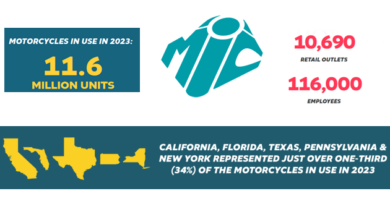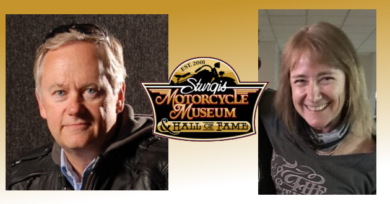May 12, 2008: The way to improving closing ratios starts with a question
If a good closing ratio is 20 percent, meaning two out of 10 customers buy, we’re doing good if 80 percent of our customers leave the dealership without purchasing. So, how do we gain additional sales from the 80 percent of unsold customers?
First, we must realize our competition isn’t just the dealer across town. Now more than ever our true competition is anything a family can spend money on for enjoyment. It seems for every person who wants a new bike, there’s a spouse that wants a new dining room suit, big screen TV, family vacation, house, truck, boat, RV… and the list goes on and on.
When a customer visits a powersports dealership, it does mean they’re interested in our products, but they might be interested in several other products as well. This means we must follow-up with unsold customers and give them a reason to return to the dealership. But how can you follow-up with a customer if you didn’t get their contact information? You can’t.
Through its national retail benchmarketing study, Pied Piper Management Co. determined powersports dealers only ask for a customer’s contact information 38 percent of the time. This means we cannot follow-up with 62 percent of our customers! In comparison, RV dealers ask for a customer’s contact information 68 percent of the time, and auto dealers ask for contact information 82 percent of the time. So our performance in this area is lacking, and we have significant room for improvement.
Our customers are looking for someone to help convince them they’re making the right buying decision, so we must be able to follow-up. Additionally, it has been documented customers will tell us things over the telephone that they wouldn’t have told us in person. Things like, “your price is $200 higher,” or “I really wanted the black and all you have is the red.” The point is, if you don’t get their contact information and follow up, you will never have the opportunity to get the customer back into the dealership.
Have you ever heard the old saying, “the be-back bus don’t come back?” This is only true because we’re not asking for 62 percent of our customers’ contact information. However, if we do get the contact information and follow-up, many customers will return. The good news is that when a customer does come back, our closing ratio jumps to an average of 65 percent!
So if we log five customers per day, we would have 100 logged customers in one month. With a 20 percent closing ratio, we would have 80 unsold customers. We can generally get in touch with 50 percent of our follow-up dials, so we would have 40 contacts. Those 40 contacts would lead to approximately 20 appointments, which could easily create an additional 10 unit sales per month. This is only possible if we can learn how to get the customer’s contact information.
Here are a couple of tips to consider when asking for contact information:
We’re all representing the powersports industry together competing against the expendable portion of every family’s income. If the RV and automotive guys are following-up and we’re not, then you can bet that the “be-back bus won’t come back.”
But if we can learn the importance of gathering our customers’ key contact information and follow-up quickly, then we can sell more units despite the market, weather or economy.
About this column
Series goal: Each column will focus on one aspect of the sales process and provide tips on improving that aspect.
This edition: Getting customer contact information
National average for getting contact information: On average, dealerships only ask for consumers’ contact information 38 percent of the time, according to the 2008 Prospect Satisfaction Index, an annual study conducted by Pied Piper Management Co.
Tory Hornsby, general manager of Dealership University, was drawn to the powersports industry more than 10 years ago when he turned his passion for motorcycles into a career. Hornsby worked in nearly every position in the dealership before becoming a general manager. He welcomes your e-mail: thornsby@dealershipuniversity.com.




